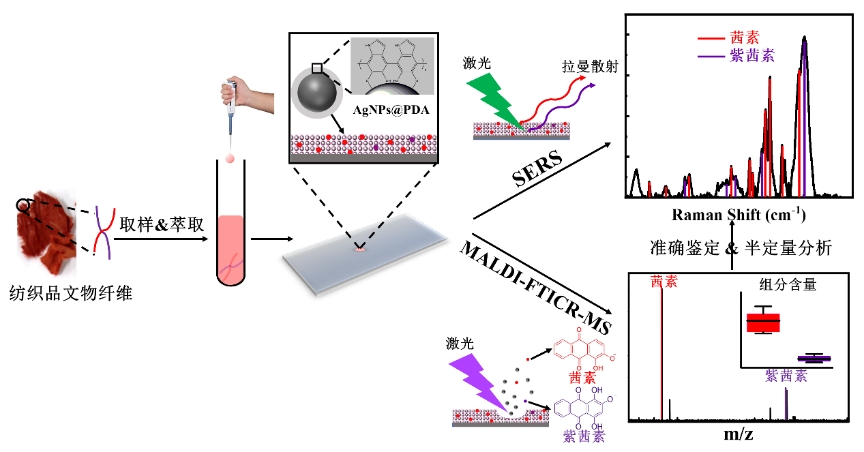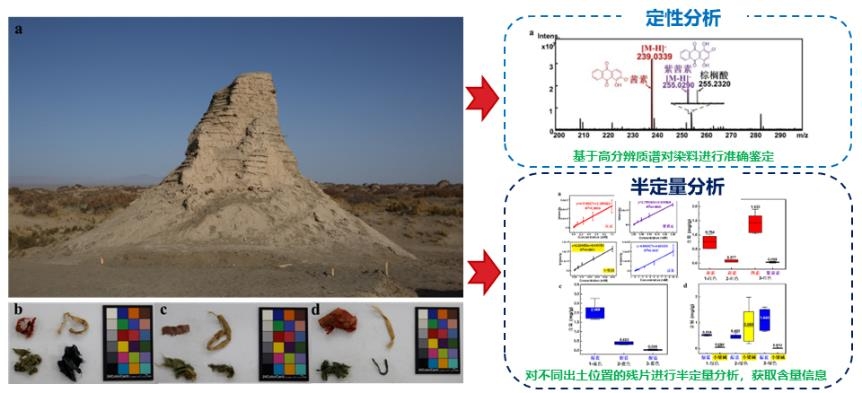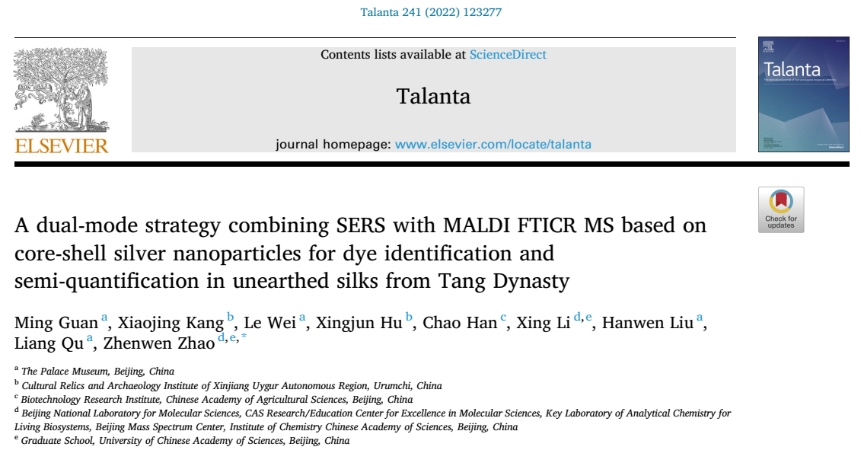Dyes are one of the key substances used to colour textiles. Ancient natural dyes are known for having a great range of chemical composition and sources and complex application techniques, which pose enormous challenges for the analysis of dyes used on excavated textiles.
In recent years, surface-enhanced Raman scattering (SERS) has been used in the analysis of organic pigments and dyes used on artworks. However, the complex dye composition of natural plants in ancient China would often lead to erroneous results in analysis based on existing SERS methods. Moreover, the semi-quantitative analysis of dye composition using SERS methods is fairly challenging, limiting refined comparative analysis of dyes from different samples.
Matrix-assisted laser desorption/ionization Fourier transform ion cyclotron resonance mass spectrometry (MALDI-FTICR-MS) offers ultra-high-quality resolution (up to four decimal places) and boasts features such as high accuracy, easy to operate, high-throughput analysis and relatively high salt tolerance, thus allowing fast and accurate identification of unknown organic components in complex samples.
The use of nanoparticles gives MALDI-FTICR-MS repeatability and stability and allows its application in the semi-quantitative analysis of small molecular compounds. Taking advantage of these strengths, the research has developed a dual-mode testing strategy that combines SERS and MALDI-FTICR-MS based on AgNPs@PDA (image 1), which may be applied to the accurate assessment and the semi-quantitative analysis of complex dyes in textiles. This provides strong support for value recognition, disease evaluation and preservation and conservation of textile artefacts.

Image 1. The application of AgNPs@PDA in the dual-mode strategy as SERS’s enhancement reagent and the matrix in MALDI-FTICR-MS.
Building upon the strategy and supported by the analysis technology and scientific-research collaboration platform of the China-Greece Belt-and-Road Joint Laboratory of Cultural Heritage Conservation Technology (Joint Laboratory), the Palace Museum and the Archaeological Research Institute of Xinjiang Uygur Autonomous Region have analysed the red, yellow, blue and green textile fragments excavated from the beacon remains in Xinjiang’s Keyakekuduke. They have identified four typical dye components, namely alizarin, purpurin, berberine and indigo, and their ratio, which would support further research on the dyeing techniques (image 2).

Image 2. Qualitative and semi-quantitative analysis of the dyes found in textiles excavated from the beacon remains in Xinjiang’s Keyakekuduke based on the dual-mode strategy.
Thanks to strengths such as high testing accuracy and good repeatability and stability, the method has an extensive application prospect in the qualitative and semi-quantitative analysis of complex dyes. It also provides strong support for textile artefacts’ value recognition, disease evaluation and preservation and conservation, and the results have been published inTalanta, a scientific journal in applied analytical chemistry in the Science Citation Index, in 2017 (image 3).

Image 3. The research has been published inTalanta, a scientific journal in applied analytical chemistry (link to the paper:https://doi.org/10.1016/j.talanta.2022.123277).







